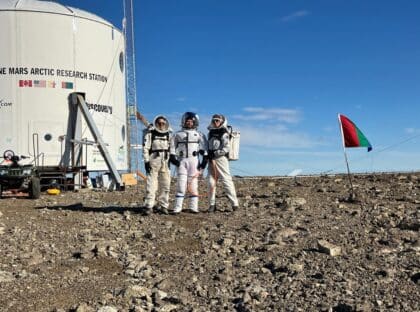
An in-depth CNBC video report takes a close look at the technical, psychological, and logistical challenges of sending humans to Mars. The segment includes a visit to the Mars Society’s Mars Desert Research Station (MDRS) in Utah, showcasing life inside a Mars analog simulation. It features interviews with Mars Society President Dr. Robert Zubrin, members of MDRS Crew 315, and other leading space experts discussing what it will take to get astronauts to the Red Planet—and keep them alive.
Ever since American astronauts landed on the Moon for the first time in 1969, there’s been an appetite to visit our closest neighbor: Mars. Both President Trump and SpaceX CEO, Elon Musk have said that landing humans on Mars is a priority for the U.S. But a number of daunting challenges stand in the way of this goal.
At the core of Musk’s plan to reach Mars is Starship, the world’s largest and most powerful rocket ever built. In March, SpaceX conducted Starship’s eighth test flight. While SpaceX was able to successfully retrieve the Super Heavy booster, the Starship spacecraft exploded, leaving a trail of debris in its wake and disrupting commercial flights.
Meanwhile, NASA is aiming to return humans to the moon under its Artemis directive and use that as a steppingstone to future human missions to Mars. But Artemis has been hit with delays and cost overruns.
CNBC visited the Mars Desert Research Station in Utah to get a behind-the-scenes look at what life on Mars could be like and spoke to experts about what challenges remain to landing humans on the red planet.
Watch the CNBC video here.
Produced & edited by: Magdalena Petrova


